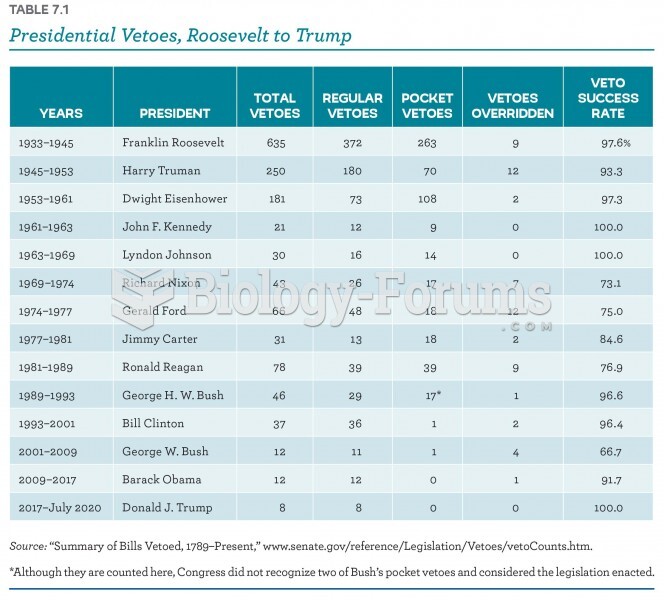|
|
|
The longest a person has survived after a heart transplant is 24 years.
By definition, when a medication is administered intravenously, its bioavailability is 100%.
People often find it difficult to accept the idea that bacteria can be beneficial and improve health. Lactic acid bacteria are good, and when eaten, these bacteria improve health and increase longevity. These bacteria included in foods such as yogurt.
The first oncogene was discovered in 1970 and was termed SRC (pronounced "SARK").
Acute bronchitis is an inflammation of the breathing tubes (bronchi), which causes increased mucus production and other changes. It is usually caused by bacteria or viruses, can be serious in people who have pulmonary or cardiac diseases, and can lead to pneumonia.







